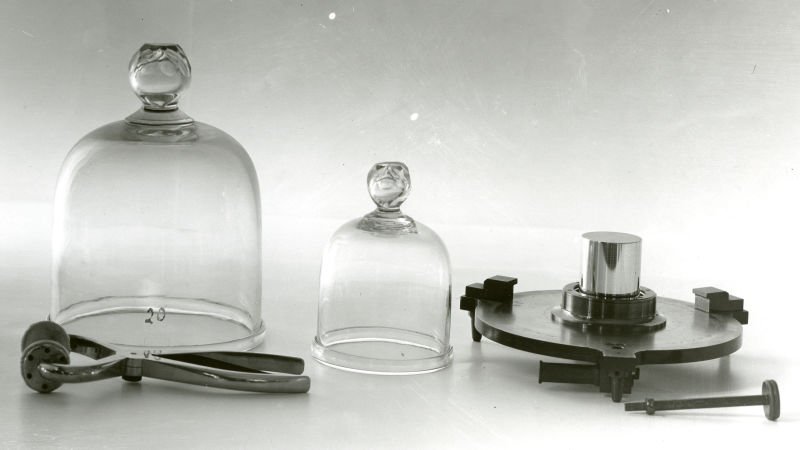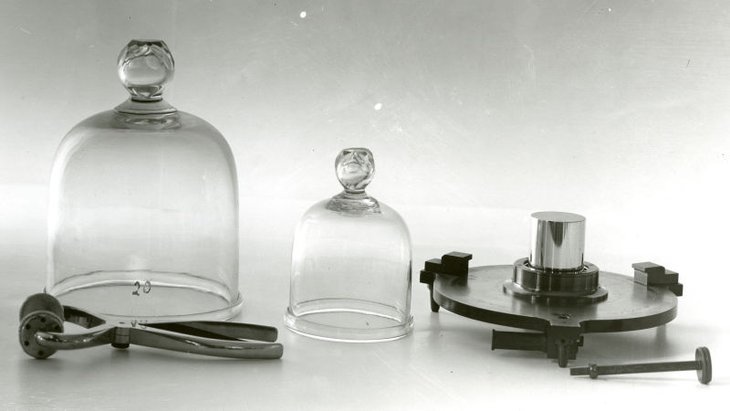Our Long-known Definition Of Kilogram Is About To Change
Author - Nov 15, 2018

Scientists are about to redefine the kilogram and the way we weigh and measure things.
The mass' future will be decided by the votes at a next week conference.
For the General Conference taking place next week, a long discussion resulted in the international model of the kilogram to be tossed out. The current kilogram prototype is a hunk of iridium and platinum resided in Paris. The BIPM (International Bureau of Weights and Measures) would reevaluate the International Standard System of Units instead, to make sure that kilogram’s definition is based on constant material, which could call for the whole rethinking of the mechanism of kilograms.

As what was reported, there’s an idea behind the reliance on a hunk of metal. To stop traders from deceiving customers, King Louis the 16th invented a weight unit, which was named “the grave” and equaled 1,000 cubic centimeters of water at zero degree Celsius. In 1795, French rulers decided to use the gram instead, which is a cubic centimeter of water at a four degree Celsius. Later in 1799, water measurement was replaced by the hunk of metal for convenience, and a treaty was signed by 17 countries in 1875 in order to have their systems follow the global kilogram prototype, or "Le Grand K", aka "Big K". There are over one hundred countries, the US included, have already signed an accord to work with BIPM.
Le Grand K resides under a considerable level of security (three locks and keys) in Paris. Other countries can obtain a replica of it and later adjust their scale to match its weight. However, there is a possibility of loss or destruction despite a bunch of guards. Moreover, when people compare the copies with the original, the results reveal that there have been changes in the mass of either the copies or the original; however, only an incredibly minor amount. One NPR report illustrated that there are possibilities of either the copies absorbed environment’s molecules or the loss of weight in the original due to washing or other processes.
The vote for BIPM proposal the following week would put the kilogram at the last standard unit that is still based upon any physical material on Earth. Alternatively, we would exploit the universe itself as a mean of measurement. Fundamental constants for measuring in experiments lie in the fabric of space and time. The light’s speed in the vacuum environment remains unchanged throughout time itself, which is approximately 299,792,458 meters per second. The ratio of one light particle ‘s energy to its frequency is 6.62607015×10–34 Joule-seconds which as named Planck’s constant. The Joule’s unit is defined as kilogram times meter squared over second squared. While seconds and meters have already been reformulated by BIPM to match the fluctuation of a cesium atom, a kilogram should now be defined according to the Planck’s constant value.
Stephan Schlamminger, a physicist of the National Institute of Standards and Technology stated that with the redefinition, we could weigh material from thin air by using the universe constant, and it was a major improvement.
Practically, those aims to determine the weight equal to a kilogram would apply a device named Kibble balance, which will put the amount of electromagnetic force needed to balance the test subject mass into measurements.
It won’t be decided until November 16th, and you may want to learn something about quantum mechanics in case of the resolution will be accepted in the Conference.
Featured Stories

Features - Jul 01, 2025
What Are The Fastest Passenger Vehicles Ever Created?

Features - Jun 25, 2025
Japan Hydrogen Breakthrough: Scientists Crack the Clean Energy Code with...

ICT News - Jun 25, 2025
AI Intimidation Tactics: CEOs Turn Flawed Technology Into Employee Fear Machine

Review - Jun 25, 2025
Windows 11 Problems: Is Microsoft's "Best" OS Actually Getting Worse?

Features - Jun 22, 2025
Telegram Founder Pavel Durov Plans to Split $14 Billion Fortune Among 106 Children

ICT News - Jun 22, 2025
Neuralink Telepathy Chip Enables Quadriplegic Rob Greiner to Control Games with...

Features - Jun 21, 2025
This Over $100 Bottle Has Nothing But Fresh Air Inside

Features - Jun 18, 2025
Best Mobile VPN Apps for Gaming 2025: Complete Guide

Features - Jun 18, 2025
A Math Formula Tells Us How Long Everything Will Live

Features - Jun 16, 2025
Comments
Sort by Newest | Popular